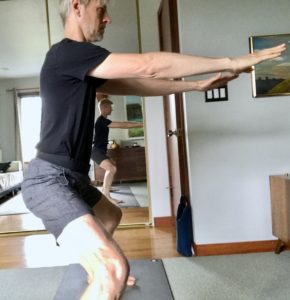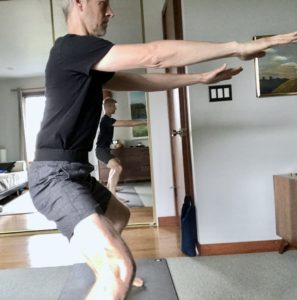Online Classes: Who Knew They’d Work So Well?
If you’d have told me even just a year ago that I’d be doing the bulk of my teaching online via Zoom, let alone having success with it, I’d have thought you were nuts. And yet, here we are coping with this new reality, however temporary, in the myriad unexpected ways in which we have ALL adapted our lives, and our livelihoods. And here I am teaching several hours a week on Zoom.
To be honest, teaching by way of a conferencing app was not a new idea to me. Just weeks before things shut down last spring I was discussing doing that very thing with a client who was already looking for ways to both help me open up business ortunities and help himself avoid having to fight traffic getting to our office every week. What has been unexpected, and pleasantly so I should add, is that I’m teaching remotely AND having a great deal of success doing it.
Helping more than one client out of chronic, stubborn back problems stands out for me as a shining example of what kind of success is possible working via Zoom and the degree to which my therapeutic skills have developed to allow such success. Sure, having the ability to see bodies up close and in person and to provide hands on guidance are notable and significant absences from my sessions, but their very absence requires that both my verbal cueing AND my clients’ attention be that much sharper and more focused. Thus the very disadvantages of using the app foster opportunities that lead to better than expected positive outcomes.
Without a doubt the most unexpected positive outcome I’ve experienced thus far working online is the success I’ve had teaching group classes via Zoom. This has been unexpected for a variety of reasons. For one, just the fact that I have no real ability to see what students are doing on the screen of my laptop when I have multiple images up seemed an immediate problem when I started. Second, the near total absence of any real interaction with my students left me to wonder how much of what was coming out of my mouth and through the internet was really reaching people. As a Tai Chi teacher friend of mine put it, there’s no “chi” coming from the students.
When I started teaching groups on Zoom, I felt awkward, isolated and uncertain. But gradually I became used to the format, regularly pushing the boundaries of what I would normally teach in my in person group classes and regularly receiving feedback that ranged from the very positive to the positively glowing. As I began to see that not only were students getting something out of the online classes but were in fact getting A LOT out of them, my confidence grew and I began to find teaching online not only doable but fun and rewarding. Now I can say that for myself and for many of my students these classes have been one of the unexpected silver linings of this pandemic.
When I first started the classes, I asked students not to invite their friends and family to join for fear that anyone unfamiliar with my approach would be overwhelmed in the classes and much more likely to get injured. I still have this concern, but I’ve had very few complaints about injuries, even among the handful of students who joined us that had not had much experience working with me in the past. As a result, like so many things over the past 8 months, I’ve rethought my earlier position and have decided it’s time open the classes up to more people.
In fact, with the feedback I’ve gotten over the past few months I feel it would be a missed opportunity not to give more students the chance to “attend” one or more of the 4 online classes I offer each week. So if you or someone you know would be interested in trying a class, I’d encourage you to contact me directly via email for details on how to join and to address any questions or concerns you have with me beforehand.
You can access my schedule HERE.
And you can find my contact info HERE.
I have had students from as far away as London, UK take my classes, but if you’re in a part of the world that makes it difficult or impossible to take my “live online” classes, I do have a library of recorded classes available.
I also have an on-demand course called DNS & YOGA INTRODUCTORY SERIES you can take with follow up classes available. This is a great option for anyone with little or know yoga experience looking for a way to get started. You can access the course HERE or contact me directly for more information.
One of these days this pandemic will be over and things will start getting back to normal. Before that happens I hope you’ll take the opportunity, if you haven’t already, to see why students taking my classes are offering so much praise. So feel free to get in touch and make arrangements to take a FREE CLASS with me soon.
In the meantime, I look forward to “seeing you” in class!




